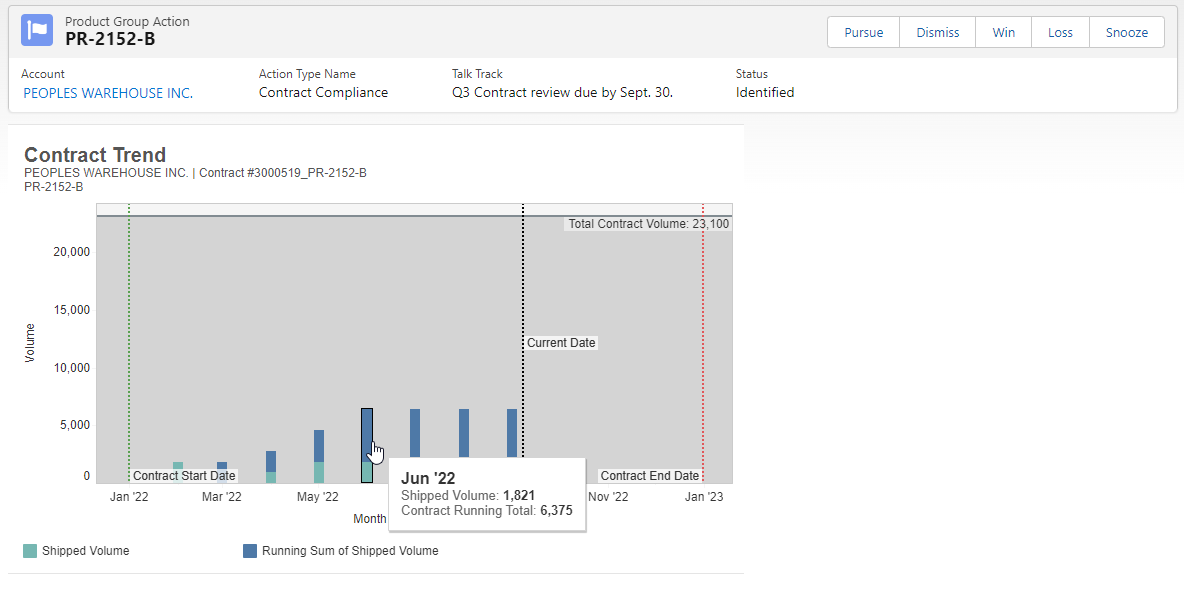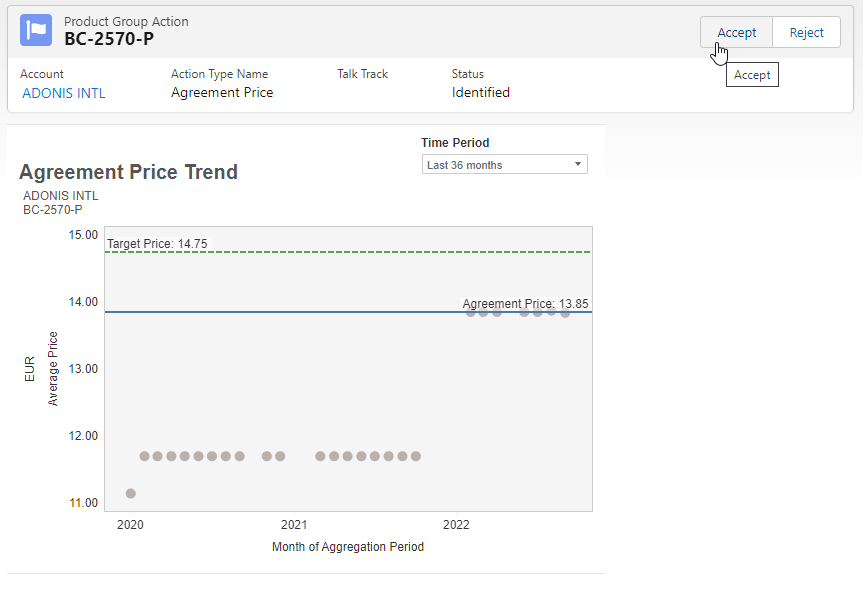Economic headwinds spurred by the pandemic and geopolitical tensions actively work against your customer-specific pricing agreements. Because of inflation and supply chain issues, it is critical to ensure B2B contracts and customer agreements are current. This blog discusses the benefits of pricing and revenue software. It helps businesses set appropriate prices for agreements and ensures that customers purchase the agreed-upon quantities.
How Do Inflation and Supply Chain Issues Threaten B2B Contract & Agreement Profitability?
“Prices are rising all over the world at a pace that hasn’t been seen in decades,” writes Bloomberg in an August report on inflation and the supply chain. The report shows that countries like the U.S., the United Kingdom, Canada and Brazil have seen consumer price index increases between six and 12 percent since June 2019.
The global supply chain crisis is making today's inflation worse, according to the Federal Reserve Bank of San Francisco.
Read more: Supply Chain Series – Staying Afloat in a Time of Crisis |Take Immediate Pricing Action | Projecting the Future
These problems are well-known to business leaders. But how they are affecting the profitability of your customer-specific agreements? Contracts and agreements are important for B2B businesses, especially with their largest and most important customers. Many B2B companies make over half of their sales through long-term customer contracts or agreements.
Let’s look at customer price agreements, and why they are often undermanaged. First, we will examine why this poses a challenge for generating profits. Then, we will demonstrate a faster and more efficient method for updating agreement lines when costs fluctuate.
Why Are Customer Price Agreements Often Undermanaged?
Customer price agreements can be difficult to update, whether en masse or even as a one-off. Salespeople protect these relationships and hey customers with agreements may expect special treatment or have significant buying power. Significant margin leakage often ensues as agreements fall prey to a “set-and-forget” approach that creates the following problems:
Agreements are created without an expiration date Customers receive a net price that remains in place for years even as costs rise Little visibility into the number of active agreements, their profitability, or their last update
Today’s market volatility amplifies the cost of undermanaging agreements. How quickly can agreement prices be updated and shared with customers when market triggers cause prices to move? Read on for an elegant solution that raises visibility throughout the agreement lifecycle and drives pricing action in the field.
Read more: Navigating the Broken Supply Chain
How Quickly Can You Move Agreement Lines Up as Costs Rise?
Many B2B companies have hundreds or thousands of active customer agreements containing hundreds or thousands of agreement lines. Recent years have created a nightmare scenario for pricing managers charged with maintaining agreement price health.
Suppliers used to raise prices once or twice a year. However, now they are increasing prices more frequently. This makes it more difficult to predict the price changes.
A heavy-duty parts distributor that works with Zilliant used to plan for new costs each January and July. Now the company is receiving monthly updates from some suppliers, sometimes with just five days’ notice.
This is a common refrain.
Increasing costs necessitate price increases. However, making changes to agreements stored in ERP systems or spreadsheets is challenging and impractical.
It's important to have a comprehensive view of all customer agreements. Identifying affected agreement lines, updating them, and promptly informing sales reps is crucial to prevent price agreements from causing margin leakage.
Zilliant Campaign Manager™, paired with Zilliant Price Manager™, significantly streamlines a company’s ability to update prices within its agreements. Price Manager™ ingests new cost data and makes it easy to identify agreement lines that fall below desired margin thresholds.
Users can leverage Campaign Manager™ to quickly publish pricing actions to Zilliant Deal Manager™ or any other agreement management system. Sales reps are notified about new customer-specific price guidance. They are then provided with clear instructions on how to handle affected customers.
Read more: How to Equip Sales Reps to Sell Excess and Stockout Inventory
Detailed visual analytics show the customer’s historical prices, agreement price, and a customer-specific target price. Sales reps receive the guidance they need to take immediate action with their customers.
Read more: What is Revenue Operations and Intelligence?
How Has a Volatile Economy Increased Contract Compliance Risk?
Monitoring compliance to volume commitments in contracts is another area of concern.
Customer contracts are frequently tied to a volume commitment. For example, a foodservice distributor might negotiate a contract price with a national restaurant chain based on the volume of “center of plate” items they commit to ordering in the next 12 months.
If that operator begins facing economic headwinds, they may pivot to a different, lower cost mix of products to reduce costs. Or, perhaps their need simply is not as great as anticipated. It is possible that orders are not at the pace required to fulfill the contracted volume commitment.
Will the foodservice distributor notice the pattern before it’s too late? Will the distributor change its expectations for the contract or hold the customer to their committed volumes? For many, legacy systems and manual methods of tracking contracts prevent them from having the visibility to act in a timely manner. Below, we will also introduce a better way to produce actionable contract compliance insights for sellers to flag potential volume compliance issues early on.
How Do You Monitor Customer Compliance for Volume-Based Contract Commitments?
Here’s another profit-diminishing B2B contract scenario that happens all the time. Say you’ve sold a contract for calendar year 2022 to a customer that extends a special price in exchange for a commitment to buy one million units during the 12-month period. It’s now September and the customer has only ordered 400,000. Your expectation was 600,000 at this point in the year.
In many cases, you are not even aware of this troubling trend. Since the deal has been long closed and filed, and it takes several time-consuming manual steps to come to this conclusion, it gets backburnered.
Without this insight, the sales rep who closed the deal is not thinking of checking in with the customer to nudge them toward hitting the volume commitment. The rep is busy selling to other customers. Most likely, the customer isn’t focused on compliance with these agreements as they have their own day-to-day operations to focus on.
By the time sales and finance management catch wind, there will be little to no time left to influence the customer’s buying behavior. Of course, this incident isn’t happening in isolation, rather it’s happening across the business. Without a method to monitor all volume commitments and immediately notify sales reps to act, negative revenue and margin impacts are inevitable.
Zilliant Sales IQ™ uses advanced data science to derive actionable customer-specific insights. In this scenario, Sales IQ™ analyzes customer agreement and shipment data. Then, it considers the length of agreement and run rate to flag when thresholds are not being hit. It doesn’t just do this for one agreement, but at scale across all agreements with volume commitments in your business.
Sales operations teams can translate those insights into targeted actions using Campaign Manager™. It enables users to filter, scope and prioritize contract compliance actions against other action types. As a result, sales reps see only the most important actions to take. The contract compliance actions are immediately displayed in CRM with clear instructions for customer follow-up, all within a closed-loop system that allows sales ops to track activity.
This solution eliminates the surprise shortfalls. Instead, sellers are alerted to flagged contracts with plenty of lead time.

How Do I Take Action?
It’s time to leave “set-and-forget” behind and instead actively manage customer contracts and agreements. Spreadsheets, emails and manual review processes are too slow and error-prone to effectively match the speed of today's market changes. The advanced data science necessary to ensure agreement profitability and contract compliance is readily available.
Reach out to a revenue operations and intelligence expert at Zilliant today to learn more and get started.
What is Sales IQ™?
Sales IQ™ is the leading B2B revenue operations and intelligence solution. It uses advanced data science to identify incremental revenue opportunities within both a company’s customer base and whitespace accounts. Sales IQ™ determines what products and quantities customers should be buying based on the buying patterns of similar customers. As a result, Sales IQ™ customers typically see a 5 to 15 percent increase in same-customer sales.
What is Campaign Manager™?
Campaign Manager™ is an application that allows sales management and operations teams to scope, refine, prioritize, and publish campaigns based on Sales IQ™ or custom, user-defined insights.
Together, Sales IQ™ and Campaign Manager™ produce and deliver targeted action types including Growth, Recovery, Product Substitution, Inventory, Win-Back, Prospecting, Contract Compliance, and more directly to sales reps.




